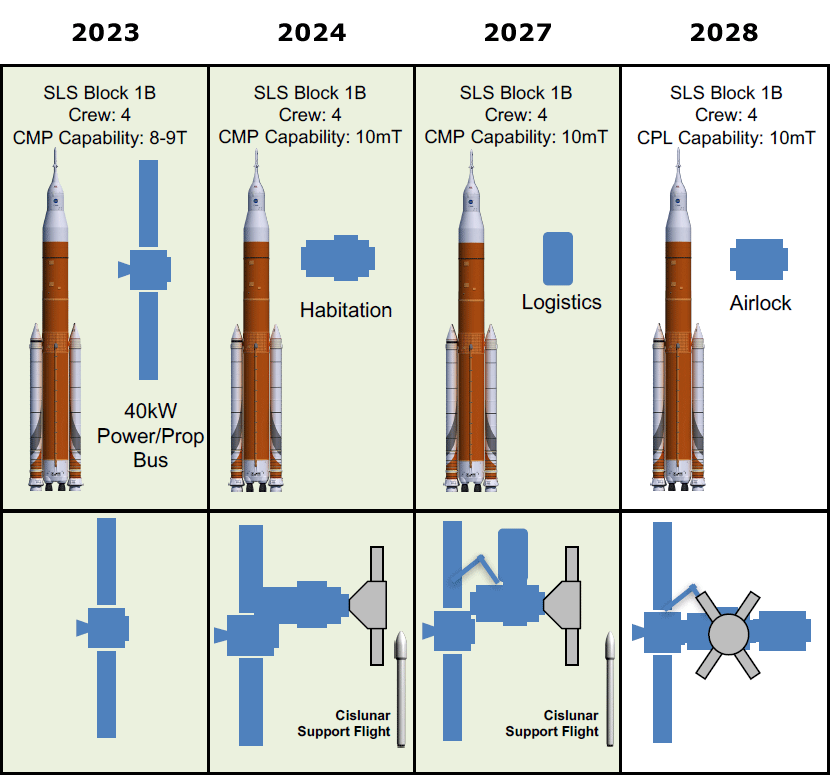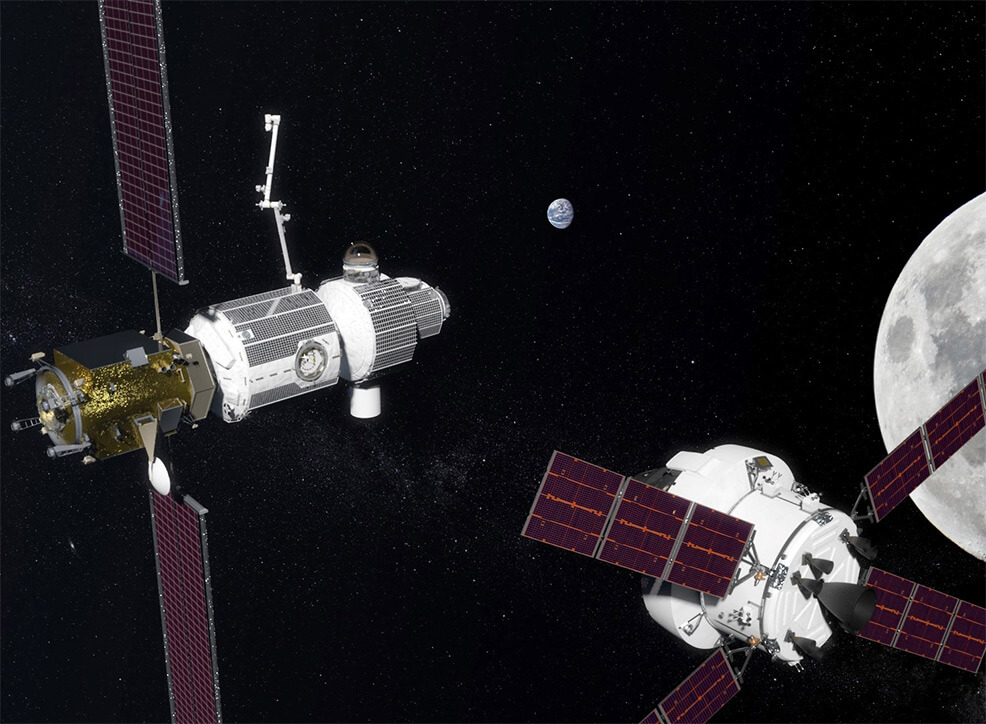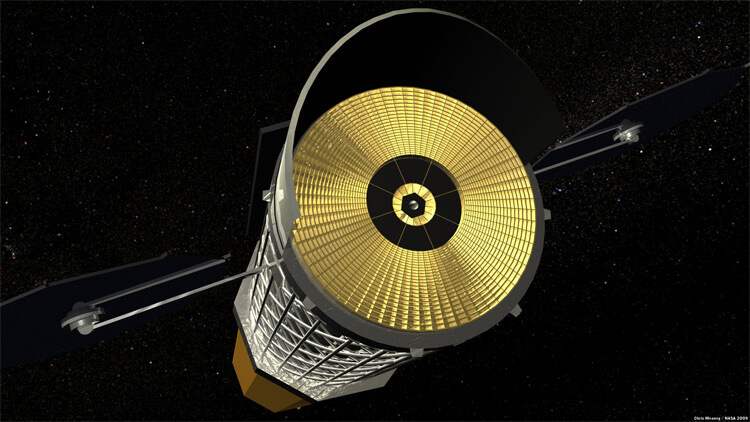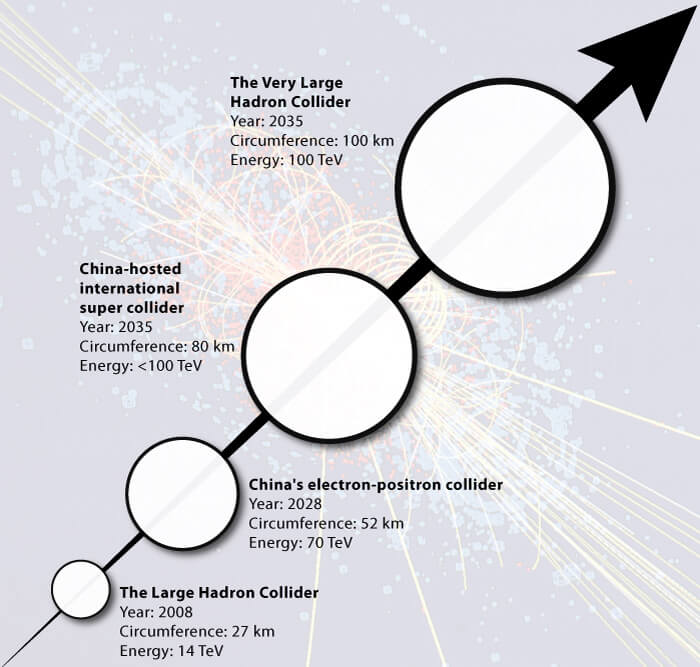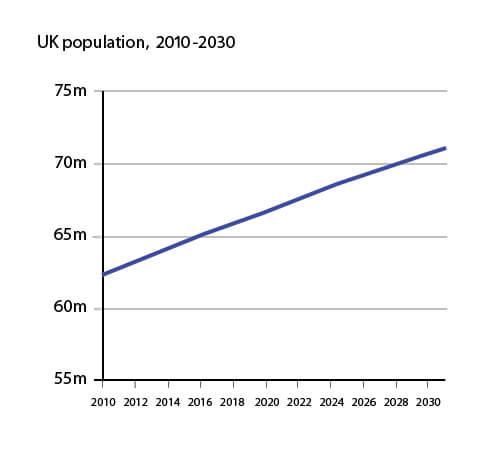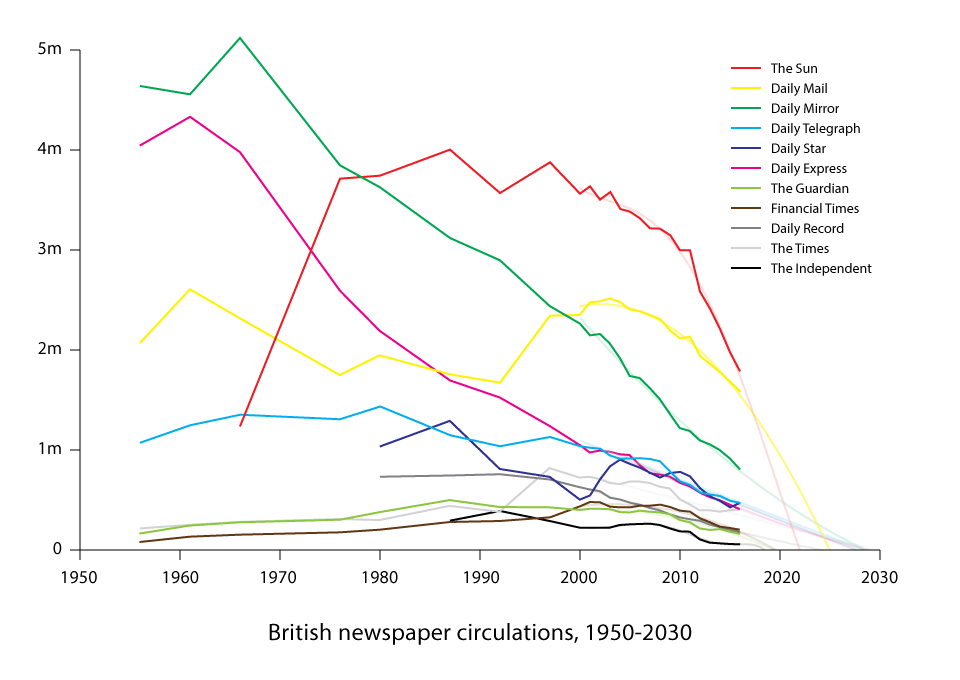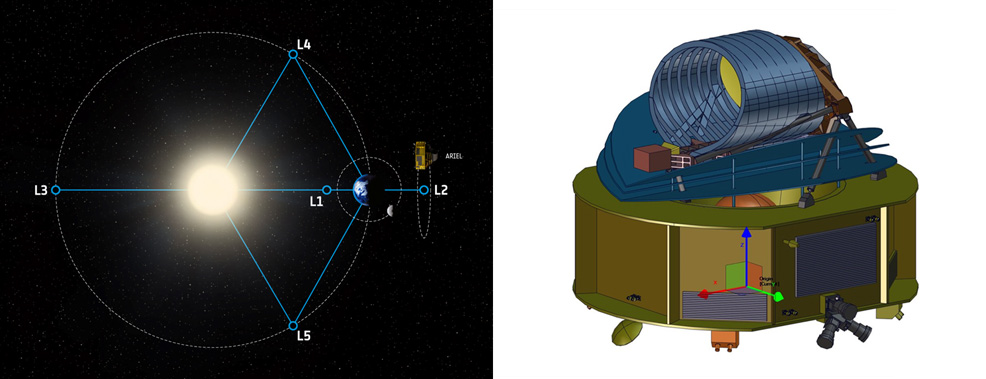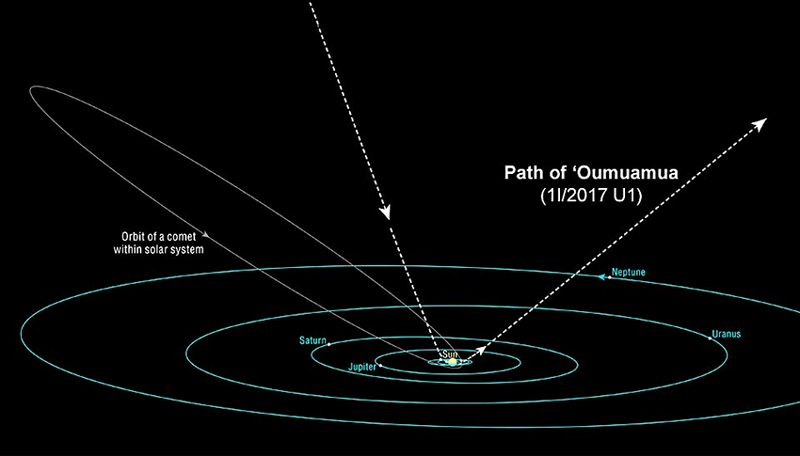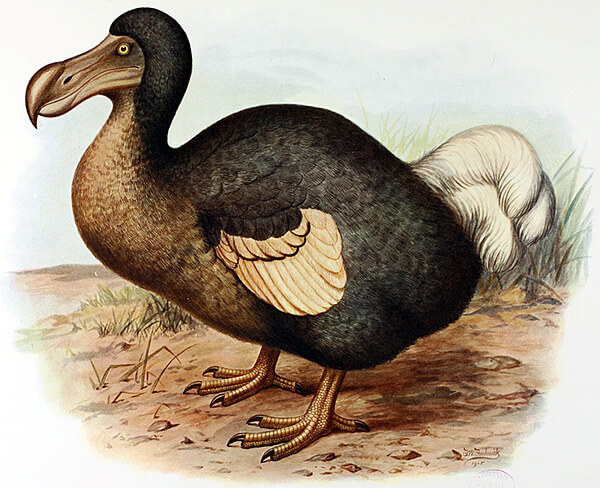
Wow, another adventure with the Lord today. I never know where these rabbit holes are going to lead me. When He begins to show me something, I just follow.
I am not even sure what started me off on this adventure. I began to look up 2028 because I was reminded of a friend of mine who made a video and wrote a book about how GOD showed him that Jesus was returning in 2028. At the time that I met Gabriel, 2028 was still quite a long way off. I was sure the end had to be closer than that. Now, I find myself wondering, “Could it be?”. Could we really have over 8 years to go, even now?
I began to look at the current events. Especially relating to Israel. After all, the Word tells us to keep our eyes on the FIG TREE. When I see how things have been developing over there, it makes sense. Some of what is written in the Bible did not make complete sense to me before, yet seems very clear now.
Let’s take a look at where I was lead today. I have only posted excerpts from most of the articles posted here. As always you can click on the titles to be linked to the source and read the full articles for yourself. The words throughout this post that are highlighted in red, are highlighted by me to draw your attention to important data. The words in green, are my commentary which may represent my person opinion, or may consist of information pulled from other sources. The sources will be provided.
Photos are either part of the article in which they are found or added by me. I try to always provide a photo credit. It is never my intention to infringe on any copyright. I provide the photos as visual aids as my articles are written to help inform and/or alert the public. I obtain no monetary remuneration for my articles.
Well, those were very interesting predictions, though we were not given any sources, and we don’t even know who is making those predictions. Nor, do we know what is the basis for them.
Let’s take a deeper look at what may be shaping the near future and what might truly be happening in 2028.
 |

Join the Future Timeline community! |
Completion of the Deep Space Gateway
The Deep Space Gateway (DSG) is the successor to the International Space Station (ISS). Whereas the ISS was placed in orbit around the Earth, the DSG is close to the Moon. The partners involved in its construction are the same as for the ISS: the Canadian Space Agency (CSA), European Space Agency (ESA), Japan Aerospace Exploration Agency (JAXA), NASA and Roscosmos.
The Gateway (Gateways are entry points) is developed, utilised and maintained in collaboration with commercial and international partners as a staging ground for lunar surface missions (both robotic and crewed) and for eventual travel to Mars. By sending people and cargo to and from cislunar space, those involved in the project gain the knowledge and experience necessary to venture beyond the Moon and into deep space.
Originally, NASA had intended to build the Gateway as part of an “Asteroid Redirect Mission”, but this was cancelled. An informal joint statement on cooperation between NASA and Roscosmos was announced in September 2017. This was followed in November 2017 by NASA commissioning studies by private companies into affordable ways to develop the station’s power and propulsion elements – these private companies were Boeing, Lockheed Martin, Orbital ATK, Sierra Nevada and Space Systems/Loral.
The Orion Multi-Purpose Crew Vehicle (shown in grey, below) would be capable of transporting up to four astronauts and docking with the DSG. A robotic arm would assist the astronauts in configuring the structure.
Adapted from “Progress in Defining the Deep Space Gateway and Transport Plan“, based on latest known schedule(s).Following this construction, the Deep Space Gateway moves to Phase 2. It becomes a staging point for the Deep Space Transport (DST), a reusable vehicle specifically designed for crewed missions to more remote destinations, such as Mars. The DST can dock with the DSG and is assembled there by a further series of SLS launches – beginning in the late 2020s and continuing into the 2030s.
Overall, the Deep Space Gateway lives up to its name as a “gateway” to places beyond low-Earth orbit (LEO) and is arguably the logical next step for human exploration of space. As well as facilitating crewed missions to Mars, it can also be used as a platform for regular visits to the lunar surface and functions as a relay between the Earth and Moon. It also serves as a blueprint for additional future stations, both government and privately-operated.
Credit: NASALaunch of the European ATHENA (Athena, daughter of Triton, also referred to as Athene, is a very important goddess of many things. She is goddess of wisdom, courage, inspiration, civilization, law and justice, strategic warfare, mathematics, strength, strategy, the arts, crafts, and skill.) X-ray observatory
The Advanced Telescope for High ENergy Astrophysics (ATHENA) is a major new X-ray telescope launched by the European Space Agency.** This L-class (Large) project is the second of three missions in the “Cosmic Vision” programme which includes two other spacecraft – the Jupiter Icy Moon Explorer (JUICE) launched in 2022 and a gravitational wave observatory being deployed in 2034. (In numerology, the number 22 is often called the Master Builder. 22 is also the Number of Revelation Source)
X-ray observations are crucial for understanding the structure and evolution of stars, galaxies and the Universe as a whole. These images can reveal “hot spots” in the Universe – regions where particles have been energised or raised to very high temperatures by strong magnetic fields, violent explosions, and intense gravitational forces. X-ray sources are also associated with the different phases of stellar evolution such as supernova remnants, neutron stars and black holes.
ATHENA is designed to answer a number of important questions in astrophysics:
• What happens close to a black hole?
• How did supermassive black holes grow?
• How do large-scale structures (i.e. galaxy clusters and superclusters) form?
• What is the connection between these processes?To address these questions, it can trace orbits close to the event horizon of black holes, measure black hole spin for several hundred active galactic nuclei (AGN), use spectroscopy to characterise the outflows and environments of AGN at their peak activity, look for supermassive black holes out to redshift z = 10, map the bulk motions and turbulence in galaxy clusters, find missing baryons in the cosmic web using background quasars, and observe the process of cosmic feedback where black holes inject energy on galactic and intergalactic scales.
This enables astronomers to understand better the history and evolution of matter and energy – visible and dark – as well as their interplay during the formation of the largest structures in the Universe. Closer to home, observations constrain the equation of state in neutron stars, black hole spin demographics, when and how elements were created and dispersed into the intergalactic medium, and much more.
To achieve these goals, ATHENA requires a collecting area of 3 square metres with 5 arcsec angular resolution and 12 metre focal length, for unmatched sensitivities. Relative to previous X-ray missions, it offers a 100-fold increase in the area for high resolution spectroscopy, deep spectral and microsecond spectroscopic timing with high count rate capability. It also features a large shield that blocks light from the Sun, Earth and Moon, which otherwise would heat up the telescope and interfere with observations. The telescope remains operational until the late 2030s.
China builds the world’s largest particle accelerator
Following the success of the Large Hadron Collider (LHC) in Europe,* the Chinese decided to build their own larger particle accelerator. Researchers at the Institute of High Energy Physics in Beijing announced plans for a machine 52 km (32.5 mi) in length – twice the circumference of the LHC. This would allow the Higgs boson to be studied in greater detail, revealing new insights into the fundamental structure of matter and confirming whether multiple types of Higgs boson existed. Construction began in 2019, with completion in 2028.* It paves the way for an even larger project in 2035.**
Printed electronics are ubiquitous
The printed electronics market has seen exponential growth. By now, it has ballooned to over $300 bn globally.* This technology began with a small number of niche, high-end products. It expanded rapidly in the 2010s, thanks to plummeting costs and improved production methods. By the 2020s it had exploded into the mainstream – creating a new generation of ultra-thin electronics.
Today, these have such low fabrication costs that they are ubiquitous in countless everyday business and consumer applications.* Many previously bulky or heavy devices can now be folded, stored or carried as easily as sheets of paper. This includes flexible TV displays that can be rolled or hung like posters. Also widespread are electronic newspapers with moving pictures, “smart” packaging and labels with animated text, along with signage in retail outlets that can be updated shop-wide at the touch of a button.*
Multimedia players with expandable, fold-out touchscreens are especially popular. Even low-end models are now the size and weight of credit cards and can easily fit inside a wallet. With petabytes of storage, gigapixels of screen resolution and superfast transfer speeds, they are orders of magnitude more powerful than iPods of the previous decade. They are also completely wireless – no cables or physical connections of any kind are required, with music being enjoyed using wireless earphones.
Credit: University of CincinnatiThe UK population reaches 70 million
Britain will soon become the most populous country in Europe, overtaking both Germany and France. This is mainly due to large numbers of immigrants. Combined with a shrinking labour force, this is putting a major strain on public services – especially in London, which has born the brunt of the increase.
Source: Office for National StatisticsBritish newspapers are going out of circulation
By the late 2020s, the last of Britain’s national newspapers are being taken out of circulation.* Even once formerly major titles like the Sun, the Daily Mail and the Daily Mirror have ceased production. The surviving newspapers have now all transitioned to entirely digital formats.
The printing industry had a long history in Britain. The first printing press was invented by William Caxton in 1476. This led to further developments in mechanical movable type and a huge increase of printing activities over subsequent centuries. During the 1600s, various publications would spread both news and rumours – such as pamphlets, posters and ballads. The English Civil War (1642–1651) greatly increased the demand for news.
Among the first real “newspapers” were the Oxford Gazette (1665), Berrow’s Worcester Journal (1690) and Daily Courant (1702). By the 1720s, there were 12 London newspapers and 24 provincial papers. The first English journalist to achieve national importance was Daniel Defoe (1660–1731). During the 18th and 19th centuries, the Industrial Revolution allowed production methods to be improved, print runs to be greatly increased and newspapers to be sold at lower cost. Circulation of The Times rose from 5,000 copies in 1815 to 10,000 in 1834 and 40,000 by 1851; about 80% of the entire market.
The period from 1860 to 1910 was considered a “golden age” of newspaper publication, with further technical advances in printing and communication – combined with a more professional style of journalism and the prominence of new owners. Socialist, labour and trade union papers began to proliferate. In 1896, The Daily Mail was first published and became the first daily newspaper aimed at the newly literate “lower-middle class market resulting from mass education, combining a low retail price with plenty of competitions, prizes and promotional gimmicks.” It was the first British paper to sell a million copies a day. Two other “halfpenny” papers to emerge included the Daily Express and the Daily Mirror. By the 1930s, over two-thirds of the population was estimated to read a newspaper every day, with almost everyone taking one on Sundays.
Circulations continued to increase, reaching a peak in the mid-20th century. From the 1960s onwards, however, sales began to decline. In an effort to attract more readers, some tabloids – including The Sun, the Daily Mirror and Daily Star – began publishing images of topless women. The 1980s saw the introduction of computer-based typesetting and full-colour offset printing. The reporting of stories became ever more sensationalised and controversial as the fall in sales continued through the 1990s and into the 21st century.
The rapid rise of the Internet – providing instant and free access to information – accelerated the decline of the newspaper industry. A major factor was the emergence of smartphones, tablets and other handheld, web-enabled devices, becoming cheap and widely available. By 2015, none of the remaining UK papers had a daily circulation above two million. The overall circulation of newspapers declined by 6.6% in 2014–15, with further declines in the following decade, resulting in the end of printed national newspapers in Britain.
Launch of the ARIEL (Daughter of Triton) spacecraft
The Atmospheric Remote-sensing Infrared Exoplanet Large-survey (ARIEL), is a space observatory launched in mid-2028* as the fourth medium-class mission of the European Space Agency’s Cosmic Vision programme. It aims to observe 1,000+ known exoplanets using the transit method, studying and characterising the planets’ chemical compositions and thermal structures, simultaneously in both visible and infrared wavelengths.*
ARIEL is launched to the L2 Lagrangian point, in a position located at a distance of 1,500,000 km (930,000 mi) from Earth, where it benefits from the planet’s blockage of light from the Sun to “maximise” the potential for exoplanet targets. The mission addresses fundamental questions about what exoplanets are made of and how planetary systems form and evolve.
Credit: ESALaunch of the Comet Interceptor
Comet Interceptor is a mission by the European Space Agency (ESA) to rendezvous with a comet originating from the outer Solar System that has now begun to approach the Sun. This follows a similar effort – Rosetta – that visited 67P/Churyumov-Gerasimenko in 2014. However, unlike that earlier probe, this new craft is designed to encounter a “pristine” comet with largely undisturbed material surviving from the dawn of the Solar System. The targeted body is therefore an ‘Oumuamua-like interstellar object, or possible fragment from the Oort cloud, approaching the inner Solar System for the first time, as opposed to a short-period comet like 67P that orbits the Sun every six years.
Wow, what a bunch of fairy tales. Tell me, if you can, just how they would possibly know that this “pristine” comet is made up of “largely undisturbed material surviving from “the down of the Solar System”??
The mission is unusual, in that it launches before a primary target has even been found. For a dynamically-new comet (DNC) or interstellar object, the time between discovery, perihelion and departure from the inner Solar System – typically a few months to a year – is too short for mission organisers to prepare and launch a new spacecraft. As such, these astronomical objects can only be encountered after being discovered inbound, with enough warning to direct an already operating spacecraft to approach. However, new observatories, such as the recently completed Large Synoptic Survey Telescope, are now improving this time by covering large areas of sky more deeply and rapidly.
Launching on the same rocket as ARIEL (see previous entry), the spacecraft is separated and then delivered to Lagrange point L2 via its own propulsion system. Comet Interceptor consists of a mothership and two smaller “daughters”, which perform simultaneous observations from multiple angles to generate a 3D profile. The daughter probes carry instruments on different trajectories through the comet’s tail, while also getting close to the nucleus. Together, all three spacecraft greatly improve the understanding of pristine comets and their surrounding environment, revealing their structures and compositions in more detail and their dynamic nature as they interact with the solar wind. This, in turn, provides new insights into the conditions that existed at the birth of the Solar System and perhaps even further back in time.*
Credit: Brooks Bays / SOEST Publication Services / University of HawaiiDelhi becomes the most populous city in the world
By 2028, Delhi has overtaken Tokyo to become the most populous city in the world. The Japanese capital had held the title since 1955, but during the early years of the 21st century it began to reach a plateau. After peaking at 37 million, the city actually went into decline from 2020 onwards. The Indian capital, by contrast, was surging ahead. Home to some 29 million people in 2018, Delhi expanded to reach 37.2 million just a decade later.** India as a whole has recently surpassed China to become the most populous country on the planet.
Tell me with all the migration and immigration going on in the world, all the wars, natural disasters, random acts of violence and rioting, how could they possibly predict the population of any nation at any point in the future??
There are many challenges associated with rapidly growing urban areas, especially in low-income and lower-middle-income countries. These include the provision of adequate housing, transportation, water, waste management and sanitation, energy and other vital infrastructure, as well as employment and basic services such as education and health care. However, India’s workforce is young and dynamic; its economy is expanding fast and on course to rival the other major superpowers by 2040.
One surprising area in which Delhi will soon benefit is the environment. For many years, the World Health Organization had ranked Delhi as the most polluted city on Earth. In the 2010s, poor air quality was causing 2.3 million deaths in India each year – almost the same as from tobacco use – costing 3% of the country’s Gross Domestic Product (GDP). However, towards the end of the 2020s, traditional petrol and diesel cars are being phased out, in favour of electric vehicles.* Widespread use of solar and other renewables is also making a difference now, with almost 60% of India’s electricity being generated from non-fossil fuels.*
Furthermore, as part of its commitment to the Paris climate agreement, India had pledged $6.2 billion to reforest 235 million acres (95 million hectares) of the country by 2030.* This vast project will soon increase India’s forest cover from 21% of total land area to 33%.
Credit: Sean HsuLos Angeles hosts the Summer Olympic Games
From 21st July to 6th August 2028, the 34th Summer Olympics are held in Los Angeles, California.* This event is the fifth Summer Games to be hosted in the United States, and the third in Los Angeles – following St. Louis 1904, Los Angeles 1932, Los Angeles 1984 and Atlanta 1996. Los Angeles also becomes the third city after London (1908, 1948 and 2012) and Paris (1900, 1924 and 2024) to have hosted the Olympic Games on three occasions.
The 2028 Games are spread across four areas, each highlighting the different geographical features of the city: Long Beach, South Bay, Downtown and Valley Sports Park.* Travel between venues is made easy thanks to L.A.’s extensive system of highways and public transport, with many improvements and upgrades having been made since the 1984 Games. By 2028, $88bn worth of expanded subway, light rail, rapid bus transit, and express lane projects are operational, connecting all sports parks, the airport, the Games Centre, and every corner of L.A.
The Olympic and Paralympic Village is based at the centrally-located UCLA campus, close to the city’s cultural and entertainment attractions. All Olympic and Paralympic sports parks are within 40 minutes of the Village.
The opening and closing ceremonies are each, for the first time, staged across two different stadiums. The opening ceremony starts at the Los Angeles Memorial Coliseum and finishes at the Los Angeles Stadium at Hollywood Park (the latter forming part of a major new sports, entertainment, hotel and business district). The order is reversed for the closing ceremony.
While most Olympic host cities have seven years to prepare, Los Angeles was given an additional four, for a total of 11 years. This was due to the unusual bidding process in 2017, which saw Paris and Los Angeles elected simultaneously for 2024 and 2028, respectively.*
Total solar eclipse in Australia and New Zealand
A total solar eclipse occurs on 22nd July 2028.** Totality occurs in a narrow path across the Earth’s surface, with a partial solar eclipse visible over a surrounding region thousands of kilometres wide. The central line of the path crosses the Australian continent from the Kimberley region in the northwest and continues in a southeasterly direction through Western Australia, the Northern Territory, southwest Queensland and New South Wales, close to the towns of Wyndham, Kununurra, Tennant Creek, Birdsville, Bourke and Dubbo. It continues on through the centre of Sydney, where the eclipse has a duration of over three minutes. It also crosses Dunedin, New Zealand.
Resurrection of several extinct species has been achieved
In 2009, the Pyrenean Ibex became the first animal to ever be made “un-extinct”, for seven minutes, when a cloned female was born alive before dying from lung defects.* This was eventually followed by a woolly mammoth, using tissue samples from ancient permafrost.* By the late 2020s,* a number of other species have been resurrected (with varying degrees of success) including the famous dodo – last observed in 1662 – and the wild pigeon, Ectopistes migratorius, which went from being one of the world’s most common birds during the 19th century, to extinction in the early 20th.
Three different approaches have been taken to restore lost animals and plants:
- Cloning, in which genetic material is extracted from preserved tissue to create an exact modern copy.
- Selective breeding, where a closely-related modern species is given characteristics of the extinct relative.
- Genetic engineering, where DNA of a modern species is edited until it closely matches the extinct species.
Ethical and legal issues are now emerging, however, such as the effect of these “alien” species on modern ecosystems and the possibility of diseases. With genetics advancing at such a rapid rate, even hominids like neanderthals could potentially be brought back. Further into the future, de-extinction of lost species will become a vital part of restoring the Earth’s biosphere, as a global rewilding effort takes shape.
The International Space Station is decommissioned
The International Space Station was constructed from 1998 to 2014. Its operational lifetime was originally planned to be until 2020, but with extra funding was extended to 2028.* This date was chosen to mark the 30th anniversary of the first Russian component to be launched. Like its predecessor, Mir, it is ditched in the Pacific Ocean. Some modules of the Russian Orbital Segment are salvaged before the de-orbiting takes place. The ISS has now been replaced by a successor known as the Deep Space Gateway, a station in orbit around the Moon.
References
1 NASA Completes Review of First SLS, Orion Deep Space Exploration Mission, NASA:
https://www.nasa.gov/feature/nasa-completes-review-of-first-sls-orion-deep-space-exploration-mission
Accessed 21st January 2018.2 ESA’s new vision to study the invisible universe, ESA:
http://www.esa.int/Our_Activities/Space_Science/ESA_s_new_vision_to_study_the_invisible_Universe
Accessed 28th November 2013.3 European Space Agency sets a path for big space science, BBC:
http://www.bbc.co.uk/news/science-environment-25125672
Accessed 28th November 2013.4 See 2015.
5 China is set to build a particle collider twice the circumference of the LHC, Geek:
http://www.geek.com/science/china-is-set-to-build-a-particle-collider-double-the-circumference-of-the-lhc-1600132/
Accessed 27th July 2014.6 At this stage, the 2035 plans are unclear, so both are included in the image (China’s version and the VLHC). See Nature link below for more details.
7 China plans super collider, Nature:
http://www.nature.com/news/china-plans-super-collider-1.15603
Accessed 27th July 2014.8 Can the ‘silver bullet’ of printing revolutionize electronics?, CNN:
http://edition.cnn.com/2009/TECH/12/09/electronics.printer.xerox/index.html
Accessed 16th December 2009.9 “Expect that the first-generation foldable e-devices will be monochrome. Color will come later. Eventually, within 10 to 20 years, e-Devices with magazine-quality color, viewable in bright sunlight but requiring low power will come to market.”
See UC Research Brings Us Step Closer to Rollable, Foldable e-Devices, University of Cincinnati:
http://www.uc.edu/news/NR.aspx?id=16686
Accessed 10th August 2013.10 Microsoft Retail Future Vision, Vimeo:
https://vimeo.com/77731601
Accessed 3rd January 2018.11 Trends and data available from the Audit Bureau of Circulations (ABC):
http://www.abc.org.uk/
Accessed 23rd August 2016.12 ESA’s next science mission to focus on nature of exoplanets, ESA:
http://sci.esa.int/cosmic-vision/59796-esa-s-next-science-mission-to-focus-on-nature-of-exoplanets/
Accessed 23rd March 2018.13 ARIEL Space Mission, Official website:
https://ariel-spacemission.eu/
Accessed 23rd March 2018.14 ESA’s new mission to intercept a comet, ESA:
http://www.esa.int/Our_Activities/Space_Science/ESA_s_new_mission_to_intercept_a_comet
Accessed 20th June 2019.15 Delhi Projected To Become World’s Most Populous City Around 2028: UN Report, NDTV:
https://www.ndtv.com/delhi-news/delhi-projected-to-become-worlds-most-populous-city-around-2028-un-report-1853170
Accessed 17th May 2018.16 File 11a: The 30 Largest Urban Agglomerations Ranked by Population Size at Each Point in Time, 1950-2035, UN Population Division:
https://esa.un.org/unpd/wup/Download/
Accessed 17th May 2018.17 India will make every new car electric by 2030, Future Timeline blog:
https://www.futuretimeline.net/blog/2017/05/4.htm
Accessed 18th May 2018.18 Solar power is now cheaper than coal in India, Future Timeline blog:
https://www.futuretimeline.net/blog/2017/05/20.htm
Accessed 18th May 2018.19 India To Bet $6 Billion On Carbon Storage Through Reforestation, Forbes:
https://www.forbes.com/sites/trevornace/2016/05/11/india-bet-6-billion-carbon-storage-afforestation/
Accessed 18th May 2018.20 LA 2028, Official website:
https://la28.org/
Accessed 18th September 2017.21 Video made before it was known that LA would be hosting in 2028, not 2024.
LA 2024 Venue Plan, YouTube:
https://www.youtube.com/watch?v=dMUIS9lJ3uY
Accessed 18th September 2017.22 Olympic Games: Paris & LA to host 2024 & 2028 respectively, BBC News:
http://www.bbc.co.uk/sport/olympics/41259992
Accessed 18th September 2017.23 Total Solar Eclipse of 2028 Jul 22, NASA:
http://eclipse.gsfc.nasa.gov/SEgoogle/SEgoogle2001/SE2028Jul22Tgoogle.html
Accessed 3rd August 2016.24 22 July 2028 — Total Solar Eclipse, Time and Date:
http://www.timeanddate.com/eclipse/solar/2028-july-22
Accessed 3rd August 2016.25 Extinct ibex is resurrected by cloning, The Telegraph:
http://www.telegraph.co.uk/science/science-news/4409958/Extinct-ibex-is-resurrected-by-cloning.html
Accessed 9th April 2013.26 Extinct animals we could – and should – clone tomorrow, io9:
http://io9.com/5738260/extinct-animals-we-could—and-should—clone-tomorrow
Accessed 25th October 2014.27 “…within 15 years they will be able to revive some more recently extinct species, such as the dodo or the passenger pigeon.”
See Stanford’s Hank Greely presents the ethics of resurrecting extinct species, Stanford University:
http://news.stanford.edu/news/2013/april/greely-species-deextinction-040413.html
Accessed 9th April 2013.28 International Space Station, Wikipedia:
http://en.wikipedia.org/wiki/International_Space_Station
Accessed 21st January 2018.
Timeline
2028 timeline contents
Completion of the Deep Space Gateway | Launch of the European ATHENA X-ray observatory | China builds the world’s largest particle accelerator | Printed electronics are ubiquitous | The UK population reaches 70m | British newspapers are going out of circulation | Launch of the ARIEL spacecraft | Launch of the Comet Interceptor | Delhi becomes the most populous city in the world | Los Angeles hosts the Summer Olympic Games | Total solar eclipse in Australia and New Zealand | Resurrection of several extinct species has been achieved | The International Space Station is decommissioned |
 Imagine 2028
Imagine 2028
We’ve asked you to imagine life in 2028 — but where to begin? Curious about what the world will look like in nine short years? Read on for our list of all-but-certainties, a few likelihoods, and the occasional kooky prediction about where we’ll be in 2028!
What the US will look like:
WE’LL BE OLDER: With the enormous size of the Baby Boomer generation, the percentage of people 65+ will increase dramatically – from 15% of the population in 2016 to an expected 21% of the population by 2030. In 2016, there were just over 49 million Americans aged 65+. By 2030, that number is predicted to grow to over 73 million.
WE’LL BE MORE DIVERSE: The population of people who are “two or more races,” as defined by the Census Bureau, is projected to be the fastest growing racial or ethnic group over the coming decades.
The American Dream in 2028
THE SAFETY NET IS FULL OF HOLES: Social Security & Medicare are running out of money. Without action from Congress, Medicare’s hospital insurance trust fund is slated to run out in 2026. Social Security benefits are expected to be reduced by 2035. Meanwhile, see the population boom in older Americans above!
THE STUDENT DEBT CRISIS ISN’T GOING ANYWHERE: The cost of college has been increasing by about 6.5% every year for the past decade, according to the US Department of Education. At that rate, one year of tuition at a public college in-state will cost over $44,000 in 2030 – and the total cost of a 4-year degree at a public college will be more than $205,000.
- With the increasing costs of college, student loan debt will continue to balloon. Today, there are more than 44 million borrowers, who collectively owe more than $1.5 trillion in student debt. The crisis is so bad that some economists estimate that by 2023, up to 40% of borrowers may default on their student loans.
- With significant debt comes limited financial independence; more young people will live at home and for longer, and will delay things like home ownership, marriage, starting a family, and saving for retirement.
If you can stomach the cost of the degree, you may find yourself struggling after graduation alongside your degree-less peers. With the development of more advanced artificial intelligence and other technological progress, many jobs will be lost to automation. We’ve already begun to experience this, most obviously in food service and customer service – iPads have replaced cashiers at some fast-casual chains, and 24-hour chatbots have taken the place of many customer service representatives. But other jobs are automating as well, and some experts predict that AI will replace 40% of all jobs by 2035. The Brookings’ Institute issued a more conservative prediction: that 25% of all jobs in the US are at a high risk for automation.
We feel pretty confident about some things:
- LA will hold the Summer Olympics once again, for the first time since 1984.
- We’ll see a lot of “self-driving” vehicles on the roads, from 18-wheelers to your next rideshare. Autonomous vehicles have already logged several million miles of road time with few incidents. In 2028, they’ll be far more common – you’ll hail a driverless taxi or catch a self-driving shuttle to the airport on your next trip.
- The new normal will be 50/50 representation in government—men and women, just like the population. Trends say this will take much longer to accomplish. But are you willing to keep running government with only half the available human resources? With the support of people like you, we can make 50/50 a reality by 2028.
We’re very intrigued by other things:
-
Your smartphone may be able to detect not just your blood alcohol level, but life-threatening disease through… the air you breathe. The SNIFFPHONE project is currently in the works, and it’s pretty cool.
-
Your eyes may, more or less, record what you see! We may be wearing contacts with embedded cameras, among other features. Sound closer to science fiction than reality? Think again. Google and Samsung already have patents for this technology!
-
This man claims to be a time-traveler from 2030. We’re not necessarily convinced of his predictions (which include electing a 20-year-old US President), but we definitely enjoyed hearing them!
Wow, that was all really scary but they didn’t even scratch the surface of the level of nightmarish “advances” already occurring let alone those we might see by 2028!
Alas, with the pros in charge, America’s en route to $40 trillion national debt by 2028. The road map to get there from here has little to no resistance…
The federal budget deficit for fiscal year 2019 was nearly a trillion dollars. Project that out over eight years and the national debt has jumped to $30 trillion. But, remember, the economy was growing in 2019.
At some point over the next eight years, the economy will fall backwards. The deficit will quickly jump to $2 trillion. Then the professionals will spring to action…
They’ll push through a $1.7 trillion spending package – on top of a $2 trillion deficit. They’ll take the fight to the scourge of climate change. They’ll send out automatic checks. They’ll redistribute wealth. They’ll fabricate nonsense jobs for everyone. They’ll take a massive whack at abolishing poverty. They’ll marshal all forces and laser focus them on the task of delivering the new earth.
By 2028 – or earlier – America will have a $40 trillion national debt with little of value to show for it. Consumer prices will be sky-high. The citizenry will be forever upside down. And the schemers in Washington will hatch even greater plans to save us from the mess of their making.
This, of course, assumes catastrophe doesn’t strike first.
CONTINUE TO: 2028 – Part 2 – THE END of the UN?
